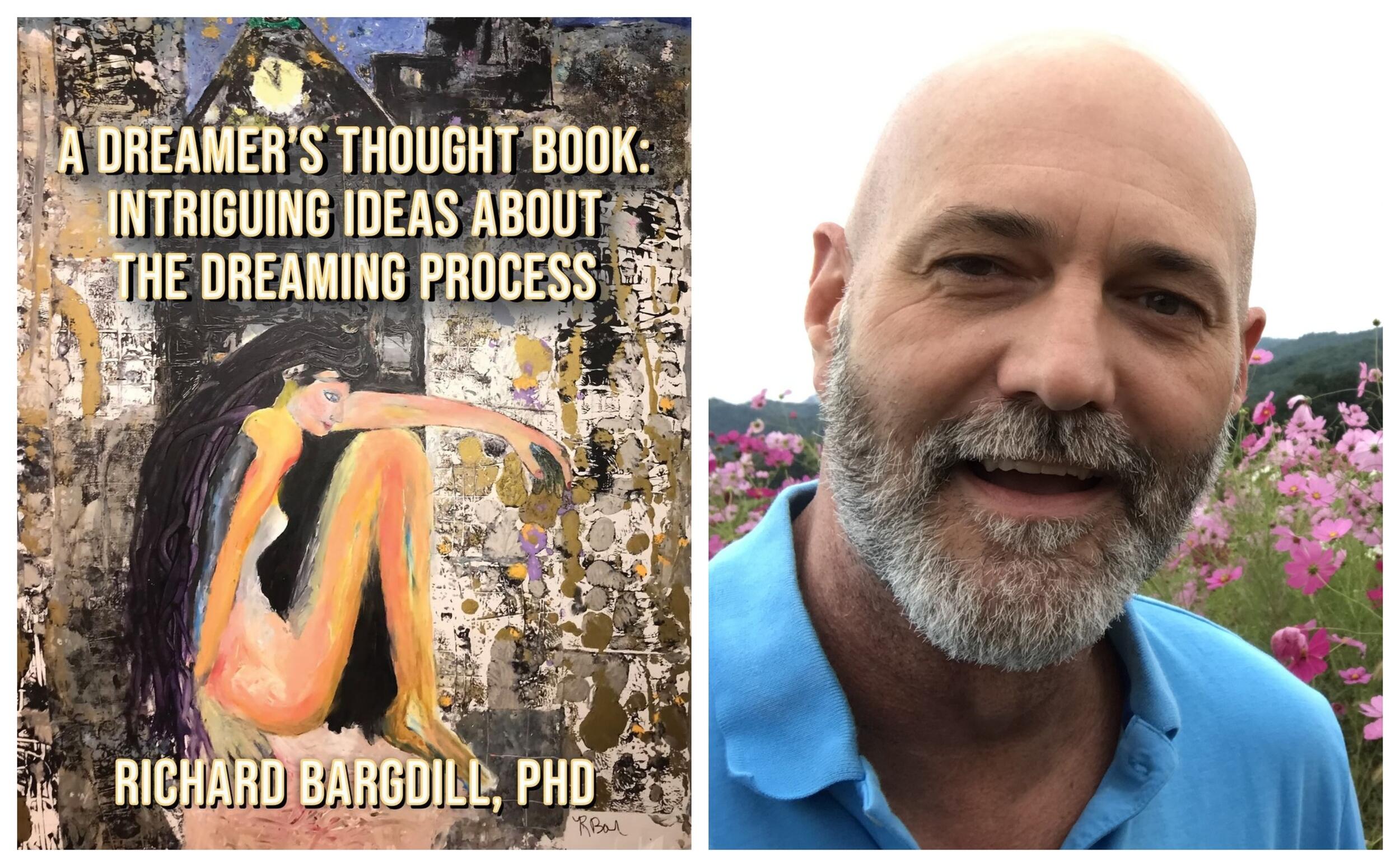
April 18, 2024
VCU professor’s new book observes how dreams can be a powerful tool
Psychology professor Richard Bargdill has been documenting his dreams for years. Now, he’s sharing what he’s learned in ‘A Dreamer’s Thought Book: Intriguing Ideas about the Dreaming Process.’
Share this story
Years ago, Virginia Commonwealth University professor Richard Bargdill had an experience that changed his life. At the age of 17, he had a prophetic dream — a dream that became true. The experience was so powerful that he began paying much closer attention to his dreams and writing down his memories of them every day.
Now, Bargdill, Ph.D., a teaching associate professor in the Department of Psychology in the College of Humanities and Sciences, has released a new book, “A Dreamer’s Thought Book: Intriguing Ideas about the Dreaming Process,” which shares 30 years’ worth of observations about the function of dreams based on the ideas contained in his dream journals.
“Every once in a while, I would have a pithy observation about the meaning, function or purpose of dreams,” he said. “So this book contains 125 maxims about dreams and my explanation about what the observations mean.”
Some of the types of dreams Bargdill explores include repetitive, lucid, warning, commentary, visitation, karmic and prophetic dreams, with each passage containing bite-sized commentary.
Bargdill, who signed copies of his new book at Barnes & Noble @ VCU on April 18, spoke with VCU News to share what readers can expect from “A Dreamer’s Thought Book” and what insights can be gleaned from dreams.
What information can dreams tell us?
Dreams are a form of intrapersonal communication: They come from yourself to yourself. They are primarily visual, so we actually better understand them once we speak them to others or write them down.
I suggest that dreams often use metaphoric and idiomatic language. An idiom is a common saying in our language. So if a dream wants to tell us we are doing something beyond our skill set, it might show us playing golf with Tiger Woods. The idiomatic message may be, “You are out of your league” — the dream is not likely about your golf game but something else in your life where you have stepped across a boundary and now are overwhelmed.
Another big insight is that dreams often use karma to teach us about our own behavior. If we have done something mean to another person while waking, the dream will put us in the same position at night. The dream will ask us “How do you like it?” It won’t be the identical scenario, but it will be the same psychological situation. So, if someone asks you for help and you decline because you are too busy, in your dream, you will need help and ask someone for it and they will turn you down.
What was the research and writing process like for “A Dream’s Thought Book”?
My collection of observations stems all the way back to my early 20s. I tried to sort them into five categories and then I elaborated on each of the maxims. The first section concerns humorous thoughts about dreams and includes some funny statements about dreams that turn out to have a basis in reality.
Some passages include being able to understand the French language in a dream, yet not being able to speak it in waking life; how dreams often use memories from the day’s events, and how to decipher what the dream is saying about your daily life; how to remember your dreams; and more.
The observation section suggests that dreams can be warnings, commentaries, reproaches, trainings, deep reveals and what I call “soul school.” Most dreams are putting us in hypothetical situations and then seeing how we respond. Any time you are embarrassed about your behavior in a dream, you are being “trained” not to respond that way in waking life.
The fourth section is on the meaning of dreams where I show the reader how to listen to their description of the dream to find the dream’s meaning (the “ah-ha” moment). The fifth section is on dream theory and here, I talk about how dreams are trying to communicate to you so you can change yourself for the better.
Subscribe to VCU News
Subscribe to VCU News at newsletter.vcu.edu and receive a selection of stories, videos, photos, news clips and event listings in your inbox.










